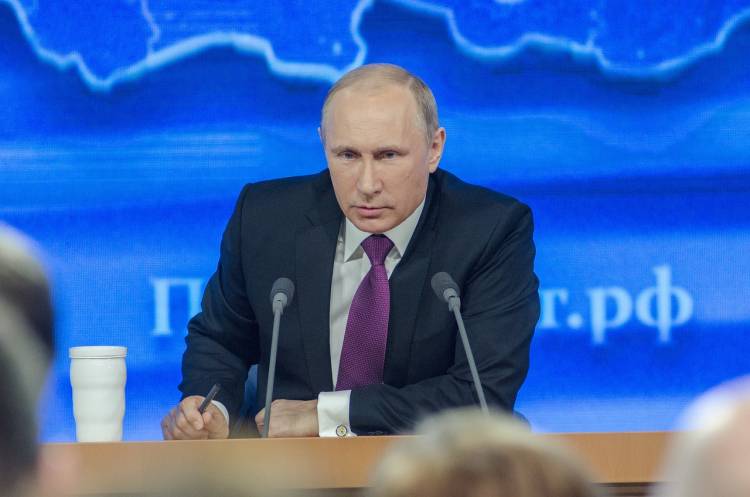Leadership Styles: Authoritarian vs. Collaborative

Leadership styles are instrumental in shaping the course of nations and organizations. Over the decades, many democracies have become authoritarian. It was more so during covid time that many governments centralized functions that were hitherto in the powers of states.
This article delves into two prominent leadership categories: Authoritarian and Collaborative. Each style possesses distinctive features that profoundly affect decision-making, power distribution, and the overall functioning of a government or institution.
Authoritarian Leadership:
Centralized Power: Authoritarian leaders gravitate towards centralizing power, making them the primary decision-makers. They exercise strict control over governance, rarely sharing authority or decision-making with regional leaders.
Exclusion of Regional Leaders: This leadership style often involves sidelining strong regional leaders or potential challengers who might pose a threat to the leader's authority. Regional power centers find it challenging to influence the decision-making process.
Concentration of Authority: Authoritarian leaders tend to maintain a firm grip on the reins of power. They are known for their reluctance to delegate authority, which can lead to concerns about the concentration of power and the exclusion of diverse perspectives.
Examples of Authoritarian Leaders:
- Xi Jinping (China): Chinese President Xi Jinping has consolidated significant power, limiting the authority of regional leaders within the Chinese Communist Party.
- Recep Tayyip Erdogan (Turkey): President Erdogan of Turkey has been criticized for his increasingly authoritarian style of leadership, concentrating power in the presidency.
- Benjamin Netanyahu (Israel): Former Israeli Prime Minister Netanyahu was known for his dominant leadership style, focusing on retaining control over key policies and decisions.
- Vladimir Putin (Russia): Russian President Vladimir Putin has centralized power in the presidency, with limited tolerance for dissent and political opposition.
- Mohammed bin Salman (Saudi Arabia): Crown Prince Mohammed bin Salman has wielded significant power and has centralized decision-making in Saudi Arabia, sidelining potential challengers.
- Abdel Fattah el-Sisi (Egypt): President el-Sisi of Egypt has maintained tight control over the government and military, limiting dissent and opposition.
- Paul Kagame (Rwanda): Rwandan President Paul Kagame has adopted a centralizing leadership style, focusing on economic development and political stability.
- Narendra Modi (India): Prime Minister Narendra Modi is known for tightly controlling the Bharatiya Janata Party (BJP) and the government, which has sometimes resulted in the marginalization of other strong party members.
Collaborative Leadership:
Shared Decision-Making: Collaborative leaders thrive on shared decision-making. They actively engage with secondary leaders, seeking input and collective solutions. This approach fosters a sense of teamwork and shared responsibility.
Balanced Authority: In collaborative leadership, authority is balanced and not concentrated in the hands of a single leader. Secondary leaders have a meaningful role in governance, contributing to a more diversified and comprehensive decision-making process.
Supportive Leadership: Collaborative leaders are often perceived as supportive figures who encourage the development of strong secondary leaders. They aim to strike a balance between authority and collective input, thus avoiding a concentration of power.
Examples of Collaborative Leaders:
- Emmanuel Macron (France): President Emmanuel Macron of France collaborates closely with Prime Minister Elisabeth Borne, who plays a significant role in governance and policy implementation.
- Andrzej Duda (Poland): President Andrzej Duda of Poland works closely with Prime Minister Mateusz Morawiecki to shape domestic and foreign policies.
- Volodymyr Zelensky (Ukraine): Ukrainian President Volodymyr Zelenskyy appointed Denys Shmyhal as Prime Minister, emphasizing his role in shaping government policies.
- Joko Widodo (Indonesia): Indonesian President Joko Widodo maintains a close partnership with Vice President Ma'ruf Amin, who advises on national matters.
- Alberto Fernández (Argentina): Argentine President Alberto Fernández works closely with Vice President Cristina Fernández de Kirchner, who influences government policies and direction.
- Gabriel Boric (Chile): Chilean President Gabriel Borica appointed ministers with significant roles in governance, fostering a collaborative approach to policymaking.
Conclusion: Leadership styles significantly influence the course of nations and organizations. Understanding the features of authoritarian and collaborative leadership is crucial in comprehending their impact on governance, power dynamics, and the involvement of secondary leaders. These distinct styles offer a spectrum of leadership approaches, each with its advantages and challenges, shaping the way leaders operate in today's complex world. Explore real-world examples from around the globe to gain insights into the diverse approaches employed by leaders in different regions and systems.

 admin
admin 






















Comments (0)
Facebook Comments